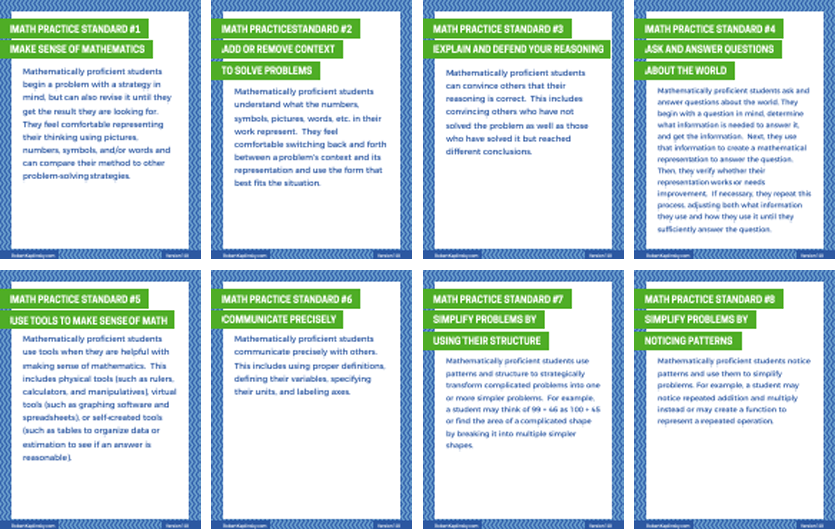This is the fifth of an eight blog post series where I’ll attempt to make a version of each of the Common Core State Standards’ Math Practices that educators, parents, and students can all understand. Simply put, the Math Practices are really tough to make sense of, which means that few educators have read them in full paragraph form and even fewer confidently understand them.
- My guiding principle comes from Antoine de Saint Exupéry who said “perfection is attained not when there is nothing more to add, but when there is nothing more to remove.” Certainly I could always add more details, but my goal is to make each standard as succinct as realistically possible and stop.
- I will make significant changes while still preserving what I believe to be each standard’s essence.
- I’ll also copy and paste the official math practice for comparison.
- I’ll add notes to explain my reasoning.
I realize that inevitably my version will also be flawed. Mainly I’m just curious to see if I can do any better. Thanks in advance for leaving me constructive criticism in the comments below so I can improve them.

Math Practice 5: Use tools to make sense of mathematics.
Mathematically proficient students use tools when they are helpful with making sense of mathematics. This includes physical tools (such as rulers, calculators, and manipulatives), virtual tools (such as graphing software and spreadsheets), or self-created tools (such as tables to organize data or estimation to see if an answer is reasonable).
Math Practice 5: Use appropriate tools strategically.
Mathematically proficient students consider the available tools when solving a mathematical problem. These tools might include pencil and paper, concrete models, a ruler, a protractor, a calculator, a spreadsheet, a computer algebra system, a statistical package, or dynamic geometry software. Proficient students are sufficiently familiar with tools appropriate for their grade or course to make sound decisions about when each of these tools might be helpful, recognizing both the insight to be gained and their limitations. For example, mathematically proficient high school students analyze graphs of functions and solutions generated using a graphing calculator. They detect possible errors by strategically using estimation and other mathematical knowledge. When making mathematical models, they know that technology can enable them to visualize the results of varying assumptions, explore consequences, and compare predictions with data. Mathematically proficient students at various grade levels are able to identify relevant external mathematical resources, such as digital content located on a website, and use them to pose or solve problems. They are able to use technological tools to explore and deepen their understanding of concepts.
- I struggled with what to make the title. I considered “Use tools for sense making” and “Use tools to solve problems,” but ultimately decided to repeat part of what I wrote for Math Practice 1 as I felt like that was part of the essence.
- The majority of this standard is a list of examples of what this might look like. While this is helpful, to me it felt like it was so wordy that important nuggets such as “they detect possible errors by strategically using estimation” get lost.


Does Math Practice #5 include mental math strategies? I like to share strategies with my students from time to time. It’s a fun exercise, and some students actually end up using them. I was wondering if mental math was considered part of a standard for mathematical practice since it requires number sense. I concluded that #5 was the best to connect to mental math strategies, but I was wondering what you thought. Thank you.
I don’t know for sure, but I haven’t personally considered doing mental math to be part of MP 5. I’m glad that sharing strategies has been helpful for your students. I wonder though how it might go if you spotted students who were using interesting strategies and highlighted that thinking. I’ve found that it makes students the stars and encourages even more thinking.